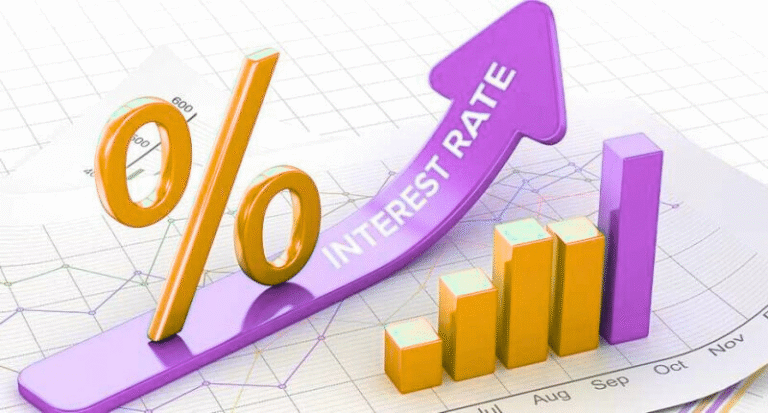Future of Borrowing: Digital Lending & AI in Finance
The financial industry is undergoing a massive transformation, with technology reshaping how people borrow, lend, and manage money. Digital Lending & AI in Finance are no longer futuristic ideas they are the present and the future. From instant loan approvals to personalized credit assessments, artificial intelligence and digital platforms are making borrowing faster, smarter, and more inclusive. This shift is not just changing banking processes but also redefining customer expectations in the global financial landscape.
The Rise of Digital Lending
Digital lending refers to the process of offering loans through digital platforms without the traditional paperwork-heavy approach. Unlike conventional banks, digital lenders use online applications, automated verification, and digital signatures to simplify the borrowing journey.
Key Benefits of Digital Lending
- Speed: Loan approvals can take minutes instead of weeks.
- Accessibility: Borrowers in remote or underserved regions can apply online.
- Lower Costs: Reduced overhead allows lenders to offer competitive interest rates.
- Transparency: Borrowers can track loan progress in real time.
This evolution has made digital lending an essential component of modern financial ecosystems.
Artificial Intelligence in Finance
Artificial Intelligence (AI) has become the backbone of modern banking. It goes beyond automation by enabling predictive decision-making and risk management. In lending, AI helps evaluate creditworthiness by analyzing not just traditional data like income or credit history but also alternative data such as digital behavior, spending habits, and even mobile phone usage.
How AI Enhances Financial Services
- Credit Scoring Innovation – Traditional credit scores often exclude people without formal financial histories. AI-driven scoring models analyze alternative data, giving more people access to loans.
- Fraud Detection – Machine learning algorithms identify suspicious patterns, reducing the risk of identity theft and fraudulent loan applications.
- Personalized Offers – AI tailors loan products based on a borrower’s needs and repayment capacity.
- Automated Customer Support – Chatbots and virtual assistants provide instant answers, improving customer experience.
Digital Lending & AI in Finance: A Powerful Combination
When combined, digital lending platforms and AI technologies revolutionize borrowing. This synergy creates a seamless borrowing cycle from application to disbursement and repayment monitoring.
Why the Combination Matters
- Instant Decisions: AI speeds up underwriting by analyzing data in seconds.
- Increased Financial Inclusion: Digital platforms powered by AI expand lending to those previously excluded.
- Reduced Defaults: Predictive analytics help lenders identify risky borrowers early.
- Scalable Growth: Lenders can handle more applications without sacrificing accuracy.
The Evolution of Borrowing: Then vs. Now
| Aspect | Traditional Lending | Digital Lending with AI |
| Loan Application | Paper forms at bank | Online/mobile application |
| Approval Time | Days to weeks | Minutes to hours |
| Credit Assessment | Credit bureau reports | AI-based alternative data |
| Customer Service | In-person/phone calls | 24/7 AI chatbots |
| Accessibility | Limited to banked users | Inclusive, global reach |
This comparison shows how technology has redefined financial services.
Challenges Facing Digital Lending & AI in Finance
Despite rapid adoption, this transformation comes with hurdles.
Regulatory Concerns
Governments are still catching up with AI-driven lending models. Striking a balance between innovation and consumer protection is critical.
Data Privacy & Security
Digital lending relies on sensitive personal data. Ensuring cybersecurity and ethical data usage is essential to maintain trust.
Algorithmic Bias
AI systems can unintentionally replicate biases present in their training data, potentially leading to unfair loan decisions.
Customer Trust
Many people still prefer face-to-face financial services. Building digital trust requires education and transparency.
Opportunities Ahead
Despite these challenges, the future looks bright.
Cross-Border Lending: AI can help lenders analyze international borrowers’ risk profiles.
Blockchain Integration: Smart contracts may automate loan agreements, reducing fraud.
Embedded Finance: Loans integrated directly into e-commerce checkouts or apps.
Green Lending: AI can evaluate the sustainability impact of funded projects.
The possibilities are endless, as innovation continues to drive financial accessibility.
Practical Tips for Borrowers in the Digital Era
Borrowers also need to adapt to this changing landscape.
Steps to Borrow Safely Online
Read the Fine Print: AI may automate approvals, but you should carefully review loan terms.
Research the Lender: Always verify licenses and regulatory compliance.
Understand AI-Based Decisions: Know how alternative data may impact your creditworthiness.
Compare Offers: Use online tools (like our Loan Comparison Calculator) to evaluate interest rates and repayment terms.
Protect Your Data: Only share financial details on secure platforms.
FAQs on Digital Lending & AI in Finance
1. What is digital lending?
Digital lending is the process of providing loans through online platforms, using technology for application, approval, and disbursement instead of traditional paperwork.
2. How does AI improve lending?
AI improves lending by enhancing credit scoring, detecting fraud, automating underwriting, and personalizing loan offers.
3. Can AI-based lending benefit people without a credit score?
Yes. AI uses alternative data such as utility payments, mobile usage, and spending patterns to evaluate creditworthiness, helping unbanked individuals access loans.
4. Is digital lending safe?
When done through regulated platforms, digital lending is safe. Borrowers should ensure the platform uses encryption and follows data protection laws.
5. What are the risks of AI in finance?
Key risks include algorithmic bias, data privacy issues, and potential misuse of sensitive personal information.
6. How fast can I get a loan from a digital lender?
Many digital lenders offer instant or same-day approvals, depending on verification requirements.
7. Will AI replace human loan officers?
AI will not fully replace human officers but will handle repetitive tasks, allowing humans to focus on complex decision-making and customer relationships.
8. What is alternative credit scoring?
It’s a method of assessing borrowers using non-traditional data like rent payments, e-commerce activity, or social behavior instead of just credit bureau reports.
9. How does AI reduce loan defaults?
AI analyzes repayment behaviors and predicts risks, allowing lenders to adjust loan terms or decline risky applications before defaults happen.
10. What role will blockchain play in digital lending?
Blockchain may enhance security, transparency, and automation in digital lending by using smart contracts and decentralized verification.
Conclusion
The future of borrowing lies in digital lending & AI in finance. Together, these technologies are transforming loan accessibility, affordability, and efficiency across the globe While challenges like regulation and bias must be addressed, the opportunities far outweigh the risks. For borrowers, the shift means faster approvals, personalized offers, and greater financial inclusion.






